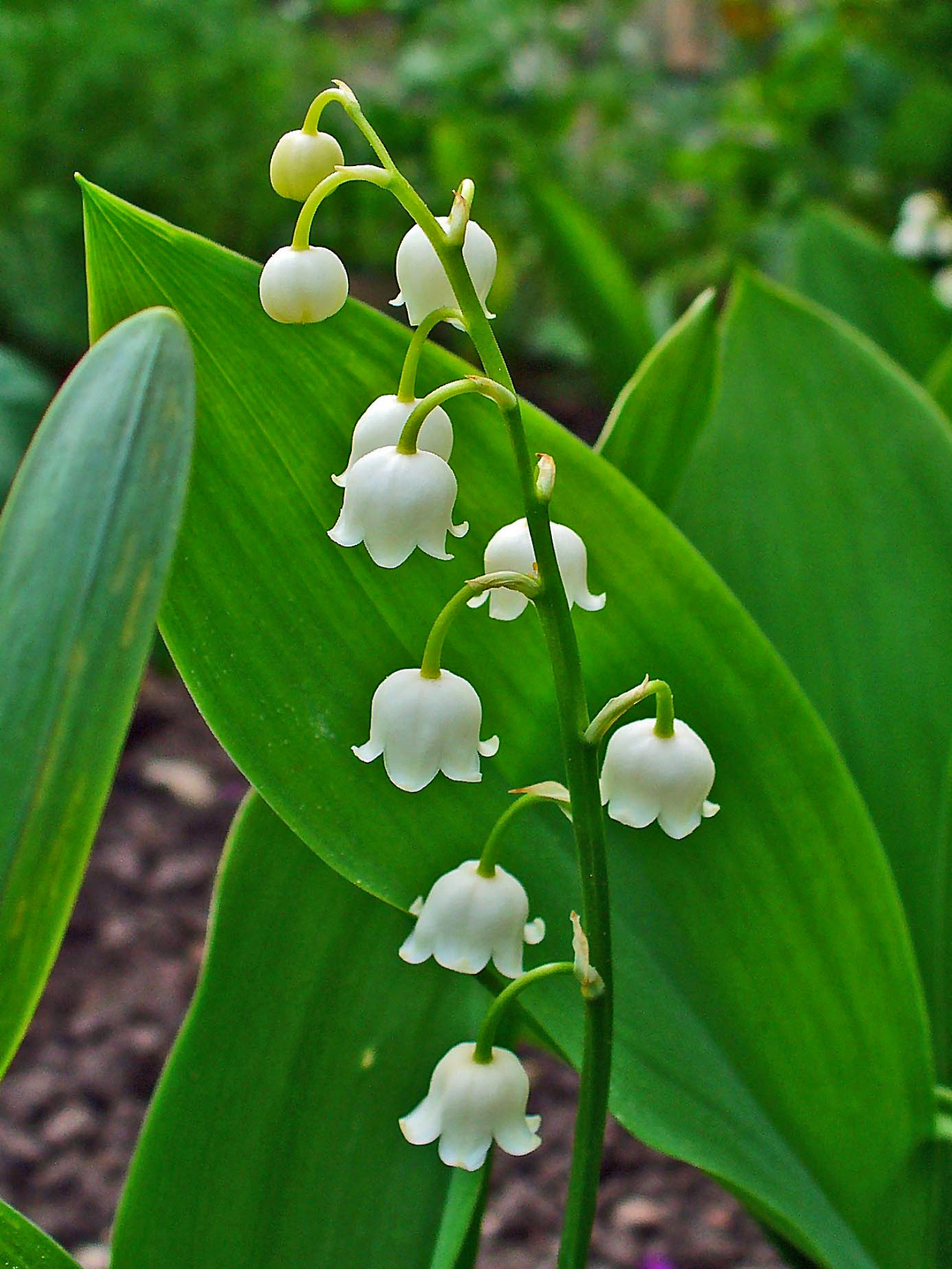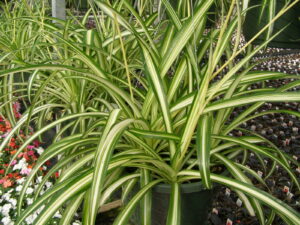When it comes to enchanting and delicate plants, few can rival the mesmerizing beauty of the Lily of the Valley. This small, bell-shaped flower has been captivating hearts for centuries with its elegant appearance and enchanting fragrance. In this comprehensive guide, we will delve into the captivating world of the Lily of the Valley plant, exploring its history, cultivation techniques, and the rich symbolism it holds. Join us on this journey as we uncover the secrets behind this magical plant.
1. The Origins of the Lily Of The Valley
The Lily of the Valley, scientifically known as Convallaria majalis, is native to the cool temperate regions of the Northern Hemisphere. It is commonly found in Europe, Asia, and North America, thriving in shaded woodland areas and damp environments.
The plant’s name is derived from its delicate, bell-shaped flowers that resemble miniature lilies and its preference for shady valleys. The Lily of the Valley has a long and fascinating history, dating back to ancient civilizations.
2. Ancient Legends and Mythology
The Lily of the Valley holds a special place in mythology and folklore. In Greek mythology, it was believed that the plant sprouted from the tears of the goddess Maia, who wept when she saw her son Hermes stealing Apollo’s cattle. The plant’s delicate white flowers were said to symbolize purity and innocence.
In Christian mythology, the Lily of the Valley is associated with the Virgin Mary. It is said that the flower bloomed from the ground where her tears fell during the crucifixion of Jesus. This association with purity and divinity has made the Lily of the Valley a popular choice for religious ceremonies and decorations.
3. The Fragrance of Love
One of the most captivating features of the Lily of the Valley is its intoxicating fragrance. The scent of these delicate flowers has been described as sweet, fresh, and reminiscent of spring. It is no wonder that the Lily of the Valley has become synonymous with romance and love.
Throughout history, the Lily of the Valley has been used in perfumes, cosmetics, and even culinary creations. Its fragrance has the power to evoke memories and emotions, making it a popular choice for special occasions such as weddings and anniversaries.
4. Cultivating the Lily Of The Valley
The Lily of the Valley is a perennial plant that can be grown in various climates, as long as it is provided with the right conditions. Here are some key tips for cultivating this enchanting flower:
- Choosing the right location: The Lily of the Valley thrives in shaded areas with moist, well-drained soil. It is best to avoid direct sunlight, as it can scorch the delicate leaves.
- Preparing the soil: Before planting, ensure that the soil is rich in organic matter and has good drainage. Adding compost or well-rotted manure can improve the soil’s fertility and moisture-retention capabilities.
- Planting the bulbs: Lily of the Valley is typically propagated through rhizomes or pips. Plant the rhizomes about 2-3 inches deep, spacing them 6-8 inches apart. Water thoroughly after planting to help settle the soil.
- Caring for the plant: Keep the soil consistently moist, but avoid overwatering to prevent rotting. Mulching around the plants can help retain moisture and suppress weed growth. Remove any dead or yellowing leaves to maintain the plant’s overall health.
- Dividing and transplanting: Over time, Lily of the Valley can form dense colonies. To prevent overcrowding, divide the clumps every 3-4 years in early spring or fall. Transplanting can also be done during this time.
5. The Symbolism of the Lily Of The Valley
In addition to its captivating beauty, the Lily of the Valley carries a deep symbolism that has resonated with cultures throughout history. Here are some of the symbolic meanings associated with this enchanting flower:
- Purity and innocence: The Lily of the Valley has long been associated with purity, innocence, and chastity. Its delicate white flowers are often used in bridal bouquets and religious ceremonies.
- Renewal and rebirth: The Lily of the Valley is a herald of spring, symbolizing renewal and the return of life after a long winter. Its appearance is often seen as a sign of hope and new beginnings.
- Love and devotion: Due to its association with the Virgin Mary and its sweet fragrance, the Lily of the Valley is considered a symbol of love and devotion. It is often exchanged as a token of affection and used in wedding decorations.
- Good luck and happiness: In some cultures, the Lily of the Valley is believed to bring good luck and happiness. It is often given as a gift to wish someone prosperity and joy in their endeavors.
6. The Lily Of The Valley in Literature and Art
The Lily of the Valley has been a muse for countless poets, writers, and artists throughout history. Its delicate beauty and rich symbolism have inspired many works of literature and art.
In literature, the Lily of the Valley has been featured in numerous poems and novels. Notable authors such as William Shakespeare, Charlotte Brontë, and Marcel Proust have made reference to this enchanting flower in their works, often using it as a symbol of love, purity, or longing.
In art, the Lily of the Valley has been depicted in paintings, illustrations, and sculptures. Its graceful form and delicate white flowers make it a popular subject for artists seeking to capture the essence of beauty and elegance.
7. The Healing Properties of the Lily Of The Valley
Beyond its aesthetic and symbolic value, the Lily of the Valley also possesses certain medicinal properties. However, it is essential to note that this plant contains cardiac glycosides, which can be toxic if ingested in large quantities. Therefore, it is advised to consult with a healthcare professional before using Lily of the Valley for any medicinal purposes.
In traditional medicine, Lily of the Valley has been used to treat various ailments, including heart conditions and digestive disorders. Its leaves and flowers have been brewed into teas and tinctures, believed to have diuretic, sedative, and mild cardiac tonic effects.
Modern scientific research has also shown potential therapeutic applications for compounds found in the Lily of the Valley. However, further studies are needed to fully understand and validate these claims.
8. Frequently Asked Questions
FAQ 1: Can I grow Lily of the Valley indoors?
Yes, it is possible to grow Lily of the Valley indoors. However, it requires specific conditions to thrive, such as bright, indirect light and cool temperatures. Additionally, proper ventilation and humidity levels are crucial to prevent fungal diseases.
FAQ 2: Can I divide and replant Lily of the Valley in the summer?
It is generally recommended to divide and replant Lily of the Valley in early spring or fall when the plant is dormant. This allows the roots to establish before the onset of extreme temperatures. Dividing and transplanting during the summer can be stressful for the plant and may reduce its chances of survival.
FAQ 3: How long do Lily of the Valley flowers last?
The flowers of Lily of the Valley typically last for about 2-3 weeks, depending on environmental conditions. However, the plant’s foliage remains attractive throughout the growing season, providing a lush green backdrop in shady areas.
FAQ 4: Can I grow Lily of the Valley from seeds?
While it is possible to grow Lily of the Valley from seeds, it is a slow and challenging process. The plant primarily spreads through its rhizomes, making division the most effective method of propagation. If you choose to grow from seeds, keep in mind that it may take several years for the plants to flower.
FAQ 5: Are all parts of the Lily of the Valley plant toxic?
Yes, all parts of the Lily of the Valley plant, including the leaves, flowers, and berries, contain toxic compounds called cardiac glycosides. These compounds can cause various symptoms if ingested, including nausea, vomiting, and irregular heart rhythms. It is crucial to keep the plant away from children and pets and handle it with caution.
Conclusion
The Lily of the Valley plant has captivated hearts and minds for centuries with its delicate beauty, intoxicating fragrance, and rich symbolism. From ancient legends and mythology to its cultivation techniques and therapeutic properties, this enchanting flower continues to inspire and fascinate people around the world.
Whether you choose to grow the Lily of the Valley in your garden, use its fragrance in perfumes, or simply admire its elegance, this magical plant is sure to bring joy and wonder to your life. Embrace the allure of the Lily of the Valley and let its timeless beauty transport you to a world of enchantment.
FAQ
FAQ 6: Can the Lily of the Valley be grown in containers?
Yes, the Lily of the Valley can be grown in containers, making it a versatile choice for those with limited garden space or for those who prefer to have this enchanting plant closer to their living areas. When growing in containers, ensure that the pot has good drainage and use a well-draining potting mix. Place the container in a shaded area and water regularly to keep the soil moist.
FAQ 7: How often should I water my Lily of the Valley plant?
The Lily of the Valley prefers consistently moist soil, but it is important not to overwater as it can lead to root rot. Water the plant regularly, especially during dry periods, to keep the soil moist but not waterlogged. It is advisable to check the moisture level by sticking your finger into the soil before watering.
FAQ 8: Can I grow Lily of the Valley from cuttings?
While it is possible to propagate Lily of the Valley from cuttings, it can be a challenging and time-consuming process. The plant primarily spreads through its rhizomes, making division the most effective method of propagation. However, if you wish to try growing from cuttings, select a healthy rhizome and cut it into sections, ensuring that each section has at least one bud. Plant the cuttings in a well-draining potting mix and keep them in a humid environment until they root.
FAQ 9: Are there any pests or diseases that commonly affect Lily of the Valley?
Lily of the Valley is generally a hardy plant with few pest or disease issues. However, it can be susceptible to fungal diseases such as leaf spot and powdery mildew, especially in humid conditions. To prevent these diseases, ensure proper air circulation around the plant and avoid overhead watering. Additionally, watch out for snails and slugs, as they may feed on the foliage.
FAQ 10: Can I use Lily of the Valley as a natural air freshener?
Yes, the fragrant blooms of the Lily of the Valley make it an excellent natural air freshener. Simply cut a few stems and place them in a vase or small container in your desired area. The sweet scent of the flowers will fill the room, creating a fresh and pleasant atmosphere.
Summary
The Lily of the Valley is a captivating plant with a rich history, enchanting fragrance, and profound symbolism. Its delicate bell-shaped flowers, associated with purity, love, and renewal, have made it a favorite among gardeners, poets, and artists alike. Cultivating this magical plant requires shade, well-drained soil, and consistent moisture.
While the Lily of the Valley holds therapeutic potential, caution must be exercised due to its toxic properties. It is important to consult with a healthcare professional before using it for medicinal purposes. Whether grown in gardens or containers, the Lily of the Valley brings a touch of elegance and beauty to any space.
As you embark on your journey with the Lily of the Valley, remember to appreciate its history, embrace its symbolism, and delight in its intoxicating fragrance. Let this enchanting plant be a reminder of the beauty and wonder that nature has to offer.



